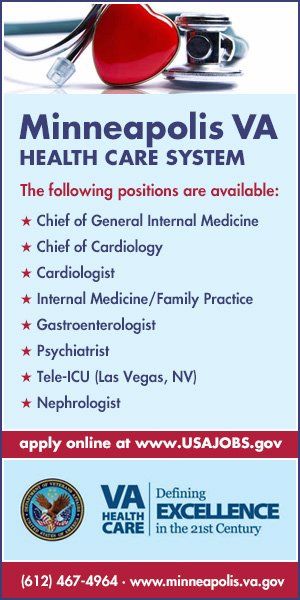Capsules
U of M Resident and Fellow Physicians Certify Union
The Minnesota Bureau of Mediation Services (BMS) recently certified nearly 1,000 resident and fellow physicians at the University of Minnesota (U of M) as being officially represented by the Committee of Interns and Residents (CIR/SEIU). The physicians are some of the first U of M workers to organize following critical reforms to the Minnesota Public Employee Labor Relations Act (PELRA), which made their union possible. As some 70% of Minnesota’s physicians are trained at the U of M, leaders of the effort say they hope to use their union to lift conditions for both medical training and, ultimately, the health of the state. “We work very hard to take care of people all over the Twin Cities and beyond, and burnout is a real problem,” said Kaitlin McLean, MD, a resident in internal medicine and pediatrics. “It’s essential that we have a seat at the table so we can care for ourselves and our patients, and so that we can stay here in Minnesota doing that critical work.”
U of M house staff work up to 80 hours a week at dozens of facilities across the area, with first-years bringing in as little as $16 an hour. Early career physicians across the country face high rates of depression, burnout and even suicide. These challenges can often be traced directly to overwork in inadequately staffed facilities. “We went into medicine to work with patients, and that work is incredibly meaningful, but it can also be a really heavy emotional burden without adequate support structures to ensure we can keep doing this,” said Dr. Dan Ly, a fellow in pediatric hematology and oncology. “In this environment, we already turn to our co-residents and fellows every day; unionizing establishes a stronger structure for us to use to support each other and to support patient care.”
CIR/SEIU has rapidly expanded in the Midwest while doubling in size nationally since 2020, as physicians seek to upend a profit-driven status quo in medicine and to put health care workers and patients first.
Memorial Blood Centers Partners with Allina Health
Allina Health recently announced that is had entered into an exclusive agreement with Memorial Blood Centers (MBC) to provide blood for Allina Health’s 12 hospital campuses across Minnesota and western Wisconsin. Founded in 1948, MBC was already serving patients throughout Minnesota and in Wisconsin, delivering over 125,000 lifesaving blood products annually. The new agreement makes MBC the largest blood supplier in Minnesota and ensures that trauma victims, cancer patients and those undergoing surgery receive the lifesaving blood transfusions they depend on. Allina Health provides more than 1 million hospital visits and more than 380,000 emergency department visits each year. The health system cares for patients from beginning- to end-of-life through its 90+ clinics, 12 hospital campuses, 13 retail pharmacies, and many specialty care centers and specialty medical services, home care and emergency medical transportation services. With MBC now providing more blood to Minnesota hospitals the need for donors has never been greater. With this expanded role the organization is calling on the community to help ensure that every patient who needs blood receives it—without delay. “We are honored to expand our partnership with Allina Health and serve even more patients across Minnesota and Wisconsin,” said Kathy Geist, vice president at MBC. “We’re calling on blood donors—new and returning—to help us meet this growing need. Every donation makes a direct impact on local patients and together we can ensure that everyone who needs blood receives it.”
“We witness the life-saving impact of blood donation in action on a daily basis in our hospitals,” said Ann Byre, chief pharmacy and laboratory officer at Allina. “As we announce this new partnership, we want to remind people that by signing up to give blood they are helping their community and our expert care team members deliver the best care possible.”
DHS Increases Oversight of Autism Care Costs
A sharp five-year increase in costs related to Minnesota Department of Human Services (DHS) spending on autism care has prompted a recent initiative to look more closely into these costs. Over the past five years spending has risen from about $38 million to about $325 million. Two important considerations related to the increase are a concerted effort from DHS to increase access to services (going from 1319 to 5320 recipients) and that the money spent does not come close to covering the care that is needed. This said, starting June 1, DHS will tighten screening requirements for providers who bill Medicaid for autism services and some housing services. This includes housing stabilization services, which help older adults and people with disabilities, as well as early intensive developmental and behavioral intervention (EIDBI) autism services. Although increasing access to treatment is good in theory, ongoing outcome studies of EIDBI pose questions around efficacy, provider qualifications and more. A wider portal for access creates a wider opportunity for fraud and abuse. There has been limited oversight or planning around this potential until now. Fraud involves the intentional deception or misrepresentation that an individual knows, or should know, to be false, and knows the deception violates the law or the public trust and could result in unauthorized personal benefit or benefit to others. Abuse involves engaging in practices that result in unnecessary cost, including providing or receiving services that are not necessary or providing services that do not meet the standards of care.
“It’s clear that these critical services need more oversight,” said the temporary human services commissioner Shireen Gandhi. “We need more staff to put eyes on these programs and make sure everyone is safeguarding resources meant to help children, people with disabilities and older Minnesotans.”
The change will strengthen oversight by:
- Mandating enhanced fingerprint and background studies.
- Requiring screening visits before Medicaid enrollment and when enrollment is revalidated.
- Allowing unannounced site visits.
- Implementing strategies to better detect, investigate and penalize fraud.
Many autism services providers and housing stabilization services providers work hard every day to meet pressing needs across Minnesota. DHS encourages providers to reach out if they need technical assistance.
Minnesota Joins Nationwide Suit to Restore HHS
Recently, Minnesota Attorney General Keith Ellison joined a group of 18 attorneys general in filing a lawsuit against Health and Human Services (HHS) Secretary Robert F. Kennedy Jr. and other Trump administration officials to stop the dismantling of HHS. To date this has included firing thousands of federal health workers, shuttering vital programs and abandoning the most needy to face health crises without federal support. The suit argues that Kennedy and the Trump administration have robbed HHS of the resources necessary to effectively serve the American people and will be asking the court to halt further dismantling and restore key program operations. Ellison said, “Congress funds HHS to improve the health and well-being of the American people, and Trump slashing the HHS staff that track and fight measles or help Americans battling addiction clearly contradicts the authority of Congress. I’m suing the Trump Administration to protect the important work HHS does and, by extension, protect the people of Minnesota and the rule of law.”
Current Trump plans call to reduce HHS from 28 agencies to15, with many surviving offices shuffled or split apart. On April 1, 10,000 HHS employees across the nation were terminated and half of HHS’s regional offices were closed, including offices in Boston, Chicago, Dallas, New York City, San Francisco and Seattle. Miners suffering from black lung disease have been left unprotected as congressionally mandated surveillance programs were abruptly shut down. Key Centers for Disease Control and Prevention (CDC) infectious disease laboratories have also been shuttered, including those responsible for testing and tracking measles. Employees working on mental health and addiction treatment, including half of the entire workforce at the Substance Abuse and Mental Health Services Administration(SAMHSA), have been fired, and all SAMHSA regional offices are now closed. These sweeping actions are in clear violation of hundreds of federal statutes and regulations, and the Trump administration does not have the authority to take them. The suit alleges that by taking these actions without congressional approval, the administration is disregarding the constitutional separation of powers and undermining the laws and budgets enacted by Congress to protect public health.
Lakeview Hospital Expansion Plans Move Forward
HealthPartners recently announced that its expansion plans for Lakeview Hospital in Stillwater are on track to break ground soon and open in late 2027. Serving the St. Croix Valley, the facility will soon provide east metro and western Wisconsin patients access to a wider range of specialists and enable them to receive essential care closer to home. The new campus will provide services needed to grow with the community. From the new family birth center and specialty centers for heart, cancer and orthopedics, to expanded critical care and emergency capabilities, the new hospital will support every stage of life.
Located at Highway 36 and Manning Avenue in Stillwater, the new campus will feature more than five acres of wetlands, natural vegetation and buffer areas, green space, trails, pedestrian pathways and common areas. These will connect the campus with the surrounding neighborhoods in a way that’s designed to complement the community while protecting privacy for patients and neighbors. Like most hospitals supporting a community this size, the campus will follow a tower design that reduces the overall building footprint and preserves the natural features of the site.
Some plans for the hospital expansion are still in development. New development, however, will include space for 20 observation beds and will maximize the additional 97-bed license for inpatient beds.
Specialty care services will include:
- Birth center
- Cancer center
- Emergency room
- Heart center
- Outpatient surgery
- Same-day imaging
- TRIA orthopedics clinic and urgent care
Design and expansion elements were guided by a 2024 survey of more than 1,200 community members.
Feedback included interest in:
- Enhancing patient experience and care by keeping quality care closer to home and adding more specialized care options.
- Comfortable waiting spaces for patients and healthy food options.
- Improving the economy and community by creating jobs; estimates suggest 250-300 new jobs will be created.
- Protecting the environment with sustainable energy sources and preserving open spaces, area landscape and wildlife.
HealthPartners has a longstanding commitment to serving the St. Croix Valley community. The new campus affirms this by providing a modern facility to deliver trusted, convenient and high-value care for decades to come.
U of M Loses $22.2 Million in Federal Grant Funding
The University of Minnesota Board of Regents recently announced that as of the end of April, 72 federal research awards had been terminated, totaling $22.3 million in lost grant funding and affecting 220 University of Minnesota personnel. A majority of the awards affected were from National Institutes of Health, National Science Foundation and U.S. Department of Agriculture. The most common reasons for the terminations were related to diversity, equity and inclusion; foreign aid; climate; vaccines; or the awarding agency was targeted for elimination or reduction.
“The University of Minnesota’s research enterprise is resilient, but today’s environment demands that we be more nimble than ever,” vice president for research and innovation Shashank Priya said. “We are fully committed to supporting our researchers — whether through rapid response initiatives, strategic planning, or direct assistance. Our goal is to protect the people and projects that drive discovery and innovation.”
The University of Minnesota has taken action to navigate this period of uncertainty. This includes conducting scenario planning with collegiate research leaders and partnering with federal relations and national associations, including the Association of American Universities and the Association of Public and Land-grant Universities. The university established a rapid response task force in February to monitor the fluid nature of the federal landscape. In addition, the university launched the Researcher Assistance Initiative for Supporting Emergencies, or RAISE, program. This new fund provides short-term funding for researchers to complete or wind down projects paused by the federal government and provide continued student, postdoc and research staff employment. The program is expected to remain active until June 30, 2025, based on need and availability of funds.
“During this time of uncertainty, we are making changes to best support our people, respect their work and sustain our leadership in providing unmatched service to the people of Minnesota, nation and world,” said President Rebecca Cunningham. “Now is the time for all of us across higher education to strongly advocate for the importance of research in maintaining our economic and national security as well as our global competitiveness.”
MORE STORIES IN THIS ISSUE
cover story one
Weaponizing Language: Finding a better way
By David Hamlar, MD, DDS
cover story two
Adult Degenerative Scoliosis: Contemporary management and key considerations
































